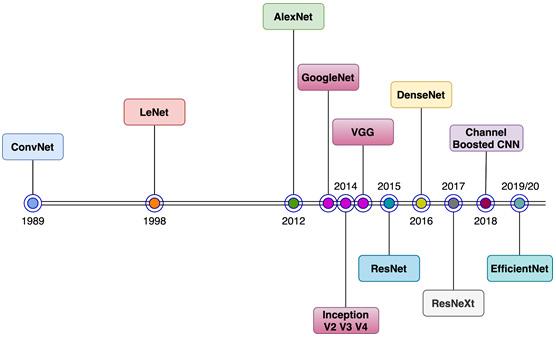Evolution of CNN architectures
CNNs have been in existence since 1989, when the first multilayered CNN, called ConvNet, was developed by Yann LeCun. This model could perform visual cognition tasks such as identifying handwritten digits. In 1998, LeCun developed an improved ConvNet model called LeNet. Due to its high accuracy in optical recognition tasks, LeNet was adopted for industrial use soon after its invention. Ever since, CNNs have been one of the most successful machine learning models, both in industry as well as academia. The following diagram shows a brief timeline of architectural developments in the lifetime of CNNs, starting from 1989 all the way to 2020:

As we can see, there is a significant gap between the years 1998 and 2012. This was primarily because there wasn't a dataset big and suitable enough to demonstrate the capabilities of CNNs, especially deep CNNs. And on the existing small datasets...






















































